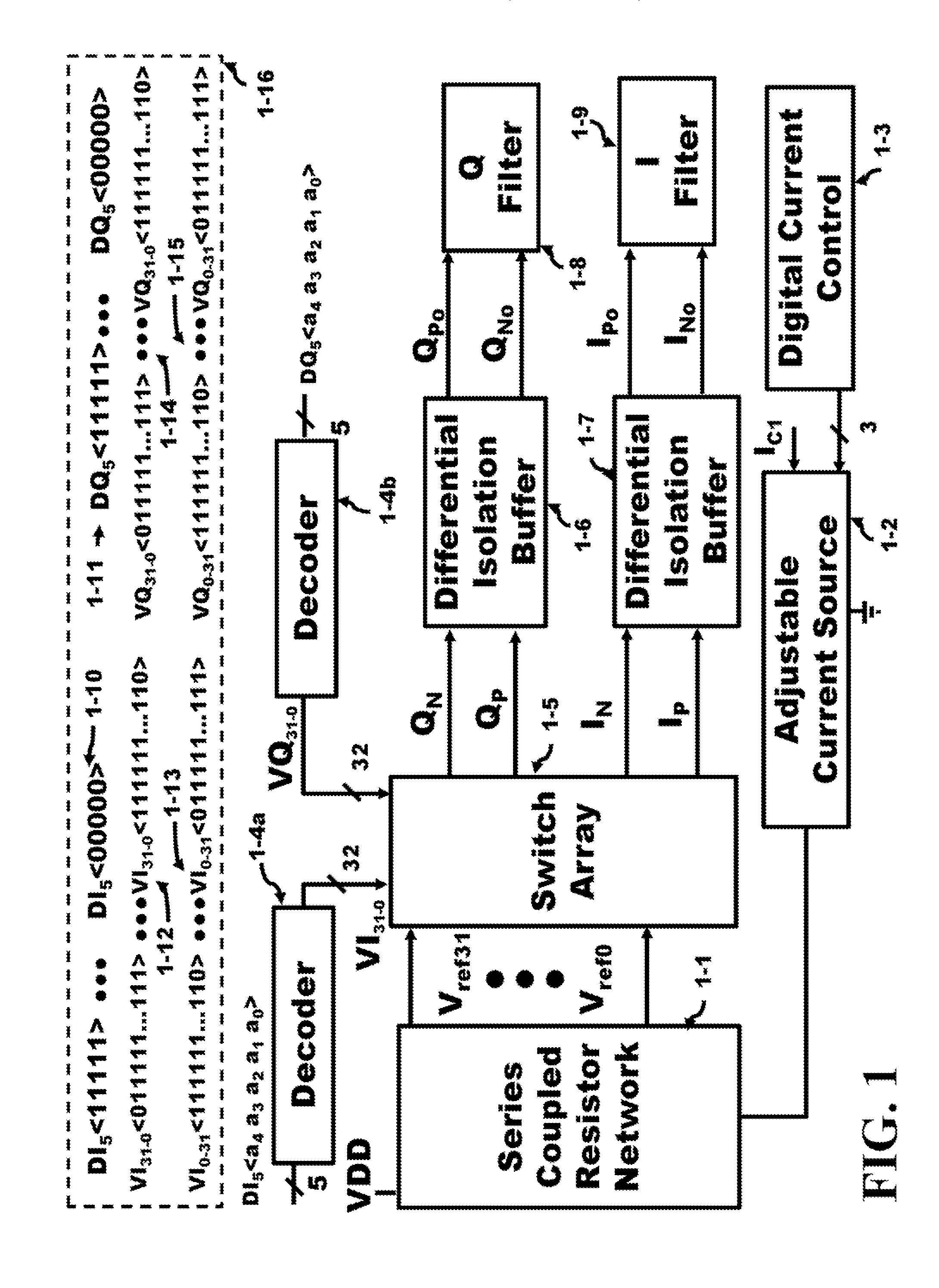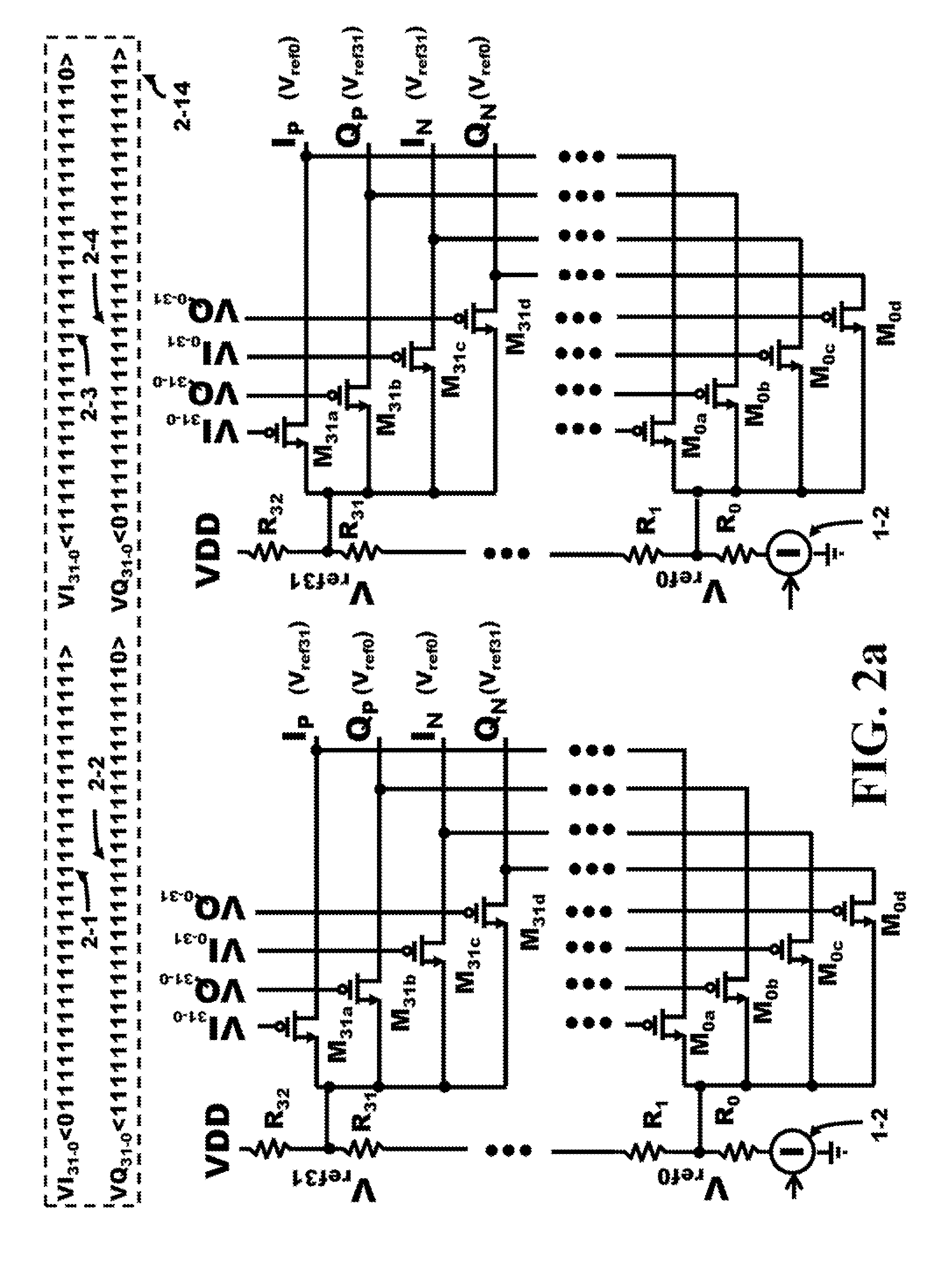Method and Apparatus for Improving the Performance of a DAC Switch Array
- Summary
- Abstract
- Description
- Claims
- Application Information
AI Technical Summary
Benefits of technology
Problems solved by technology
Method used
Image
Examples
Embodiment Construction
[0028]The inventions presented in this specification can be used in any wired or wireless system, low power supply voltage design. The techniques are applicable to any DAC design.
[0029]FIG. 1 illustrates a block diagram of the D / A converter and how the DAC output is applied to the I and Q filters. The two decoders 1-4a and 1-4b translate a 5 bit input into 32 bit patterns but the decoders could also be designed to operate on a 3 bit, 4 bit or other bit value input. At the top left is a decoder 1-4a receiving a five bit digital input for the I portion. The digital bits are DI54, a3, a2, a1, a0> providing 32 combinations. At the top right is a second decoder 1-4b receiving an additional five bit digital input for the Q portion. The digital bits are DQ54, a3, a2, a1, a0> providing 32 combinations. Examples of these strings are provided in box 1-16. The corresponding words for the input digital values DI5 and DI5 for VI31-0 is shown as 1-12 while corresponding words for the input digita...
PUM
 Login to View More
Login to View More Abstract
Description
Claims
Application Information
 Login to View More
Login to View More - R&D
- Intellectual Property
- Life Sciences
- Materials
- Tech Scout
- Unparalleled Data Quality
- Higher Quality Content
- 60% Fewer Hallucinations
Browse by: Latest US Patents, China's latest patents, Technical Efficacy Thesaurus, Application Domain, Technology Topic, Popular Technical Reports.
© 2025 PatSnap. All rights reserved.Legal|Privacy policy|Modern Slavery Act Transparency Statement|Sitemap|About US| Contact US: help@patsnap.com



